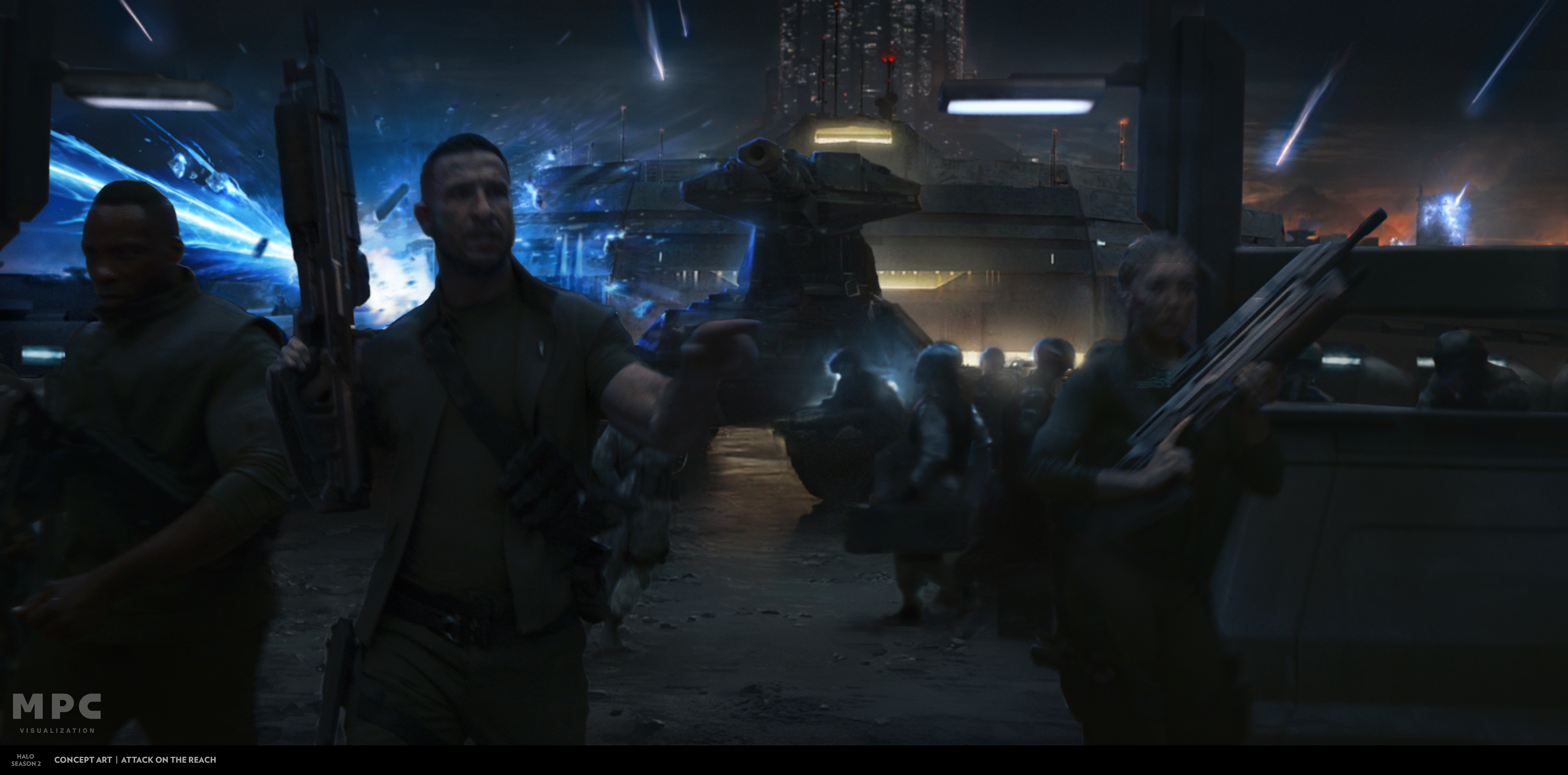
Small-screen VFX is getting, well… big. Not long ago delivering a epic sci-fi show based on a huge video game, with a judgemental fan-base keen to see their hero ‘done properly’ would send shivers down the spines of many VFX supervisors. But Halo proved it could be done, and MPC has been at the forefront of delivering exceptional shots on the Xbox-game-turned-TV-show, and no VFX supervisors were harmed.
MPC's experienced VFX team, under the leadership of VFX supervisor Kedar Manapragada and VFX Producer Nick Colangelo, collaborated closely with production VFX supervisor Wojciech Zielinski and VFX producer Mike May to deliver 97 shots for Paramount’s second Halo. A season in which everything got bigger and closer to the vision of the game developer, Bungie. Halo season 2 showed TV shows are approaching the standards of the best VFX movies.
Harnessing its expertise, MPC’s team, including DFX supervisor Artem Sukach, animation director Tom Nagy, CG supervisor James Reid, and production managers Paula Barragan Naranjo and Huong Vu, embarked on creating futuristic set extensions, full CG cityscapes, intricate hologram inserts, and high-octane destruction FX simulations for Halo’s epic battle scenes, vehicles and crowds.




Planning for Halo’s second season VFX began back in 2022 when MPC’s team met with Wojciech Zielinski and assisted in collecting motion capture data for the series upcoming fights and battle sequences.
Collaborating with Wojciech and Mike May, MPC's LA-based art department designed key characters such as the Sangheili warriors, Arbiter Var ‘Gatanai, Covenant priest Uto 'Mdama, and a revamped Cortana hologram.



The creative team also envisioned the parasitic Flood in its various development stages and crafted concepts for environments such as Reach City, Visegrad Relay, and the iconic Halo ring itself, ensuring each design seamlessly integrated into the VFX blueprint.
“A great deal of work went into pushing the environment concepts in accuracy, integrating the designs over shot plates to create a blueprint for the vfx teams" says MPC art director Leandre Lagrange.
Daily design news, reviews, how-tos and more, as picked by the editors.



Episode 1’s visual effects stole the spotlight during the medal ceremony in the FLEETCOM hangar. Much of the footage was shot against a blue screen, MPC’s environment team was drafted in to craft the detailed hangar bay extensions and innovative monitor holograms for the futuristic broadcast displays, enhancing the narrative’s visual depth.
MPC’s artists found Episode 4’s Bridge Battle sequence, depicting Reach City in flames, a challenge. The team’s Assets, DMP, and FX simulation artists undertook the task of demolishing city buildings, integrating smoke and rendering plasma fire to bring this complex scene to life and aid the storytelling.
To illuminate the CG city, an in-house Houdini tool was developed and long simulations were meticulously adjusted per shot to maintain fire and smoke continuity. MPC's compositing team perfected the battle’s look, adding plasma splash effects and UNSC weapon muzzle flashes, while modelling artists created a high-fidelity Scorpion tank 3D model. The animation team brought a Sangheili horde to life using polished motion capture and keyframe animation.





When it came to Episode 8, the climactic showdown between Master Chief and the Arbiter, the task of bringing this epic fight to the small screen was one the MPC team embraced. This intense sequence, featuring hand-to-hand and sword combat, was brought to life by MPC's character team, using enhanced CG models of the characters with battle damage, blood and gore.
Animation artists refined mocap data to capture emotional and realistic performances, while FX artists created dynamic simulations, including the shattering of Master Chief’s energy sword and cascading plasma. TechAnim artists added final touches with detailed armour integrations and skin simulations, ensuring the characters' authenticity and the scene's dramatic impact.




You can read more about how the VFX behind Halo season 2 was created on the MPC website, or get some inspiration from our guide to the best CG films of the 90s. If you're inspired by the work of MPC on Halo season 2, then grab one of the best drawing tablets and start creating.

Ian Dean is Editor, Digital Arts & 3D at Creative Bloq, and the former editor of many leading magazines. These titles included ImagineFX, 3D World and video game titles Play and Official PlayStation Magazine. Ian launched Xbox magazine X360 and edited PlayStation World. For Creative Bloq, Ian combines his experiences to bring the latest news on digital art, VFX and video games and tech, and in his spare time he doodles in Procreate, ArtRage, and Rebelle while finding time to play Xbox and PS5.
